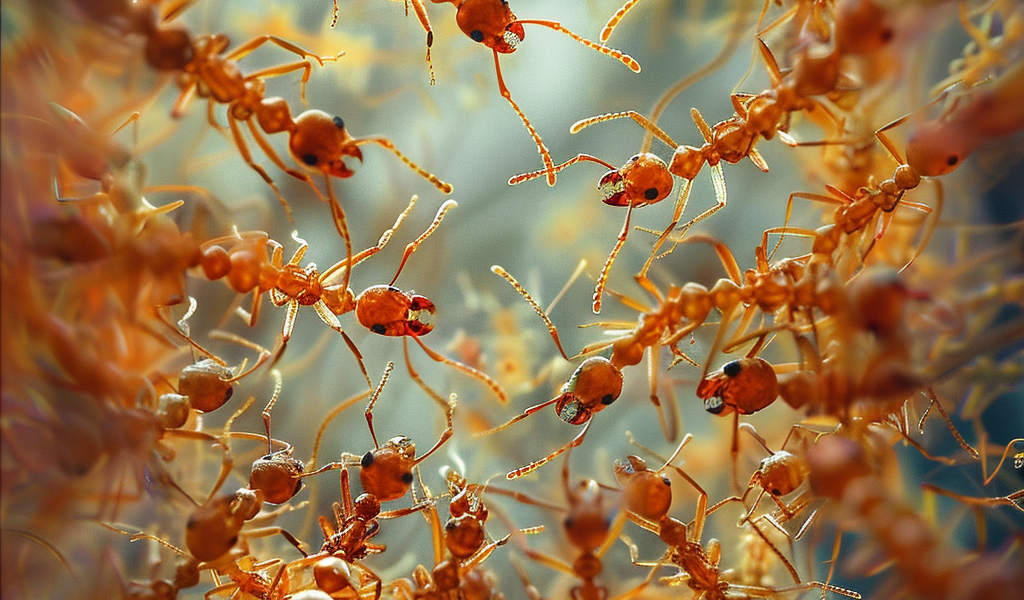Fire ants are known for their ability to form rafts to survive flooding, but have you ever wondered how these bonds actually work and what we can learn from them? A recent study led by Binghamton University sheds light on the fascinating world of fire ant rafts and their potential applications in materials science.
When faced with flooding, fire ants band together to create a floating raft that allows them to stay afloat and maintain their colony’s unity. This survival strategy mimics an adaptive material where the individual ants act as living building blocks, showcasing a remarkable example of collective behavior in nature.
Assistant Professor Rob Wagner from Binghamton University, along with researchers from the Vernerey Soft Matter Mechanics Lab at the University of Colorado Boulder, delved into the mechanics of these living rafts to understand how they adapt and alter their properties autonomously. By studying the behavior of fire ant rafts, the team aims to extract valuable insights that can be applied to the development of artificial materials with self-healing capabilities.
Wagner emphasized the unique qualities of living systems, noting that engineered materials fall short in comparison. While traditional materials like polymers, metals, and ceramics are passive in nature, living systems possess the ability to store and convert energy into mechanical work, a feat that has inspired researchers to explore new avenues in material design.
In a recent study published in the Proceedings of the National Academy of Sciences, Wagner and his colleagues examined how fire ant rafts responded to mechanical stress when subjected to stretching. By comparing the behavior of these living rafts to dynamic, self-healing polymers, the researchers uncovered intriguing insights into the adaptive properties of the ant colonies.
Unlike conventional polymers that rely on dynamic bonds for self-healing, the bonds holding the fire ant rafts together exhibit a unique resilience that allows them to break and reform under varying conditions. This dynamic behavior enables the rafts to withstand mechanical loads and adapt to changes in their environment, showcasing a level of flexibility and resilience that is rarely seen in synthetic materials.
Through their research, Wagner and his team have highlighted the potential of bio-inspired materials that draw inspiration from nature’s ingenious designs. By unraveling the secrets of fire ant rafts, scientists are paving the way for the development of innovative materials that possess self-healing properties and adaptive capabilities, opening up new possibilities in the field of materials science.





